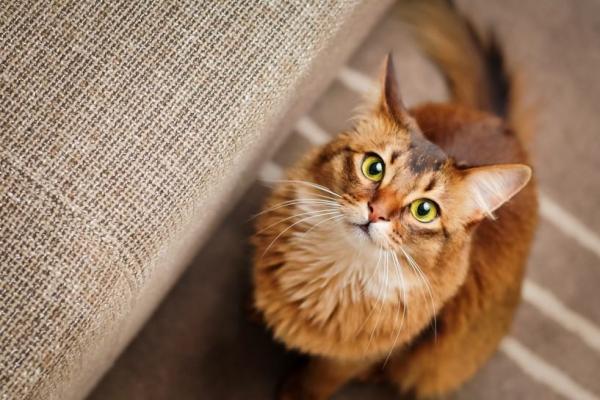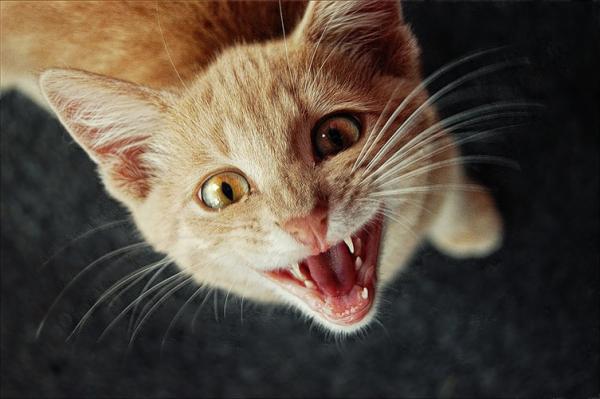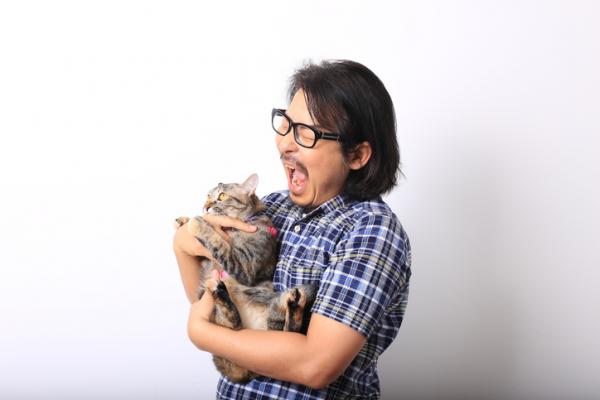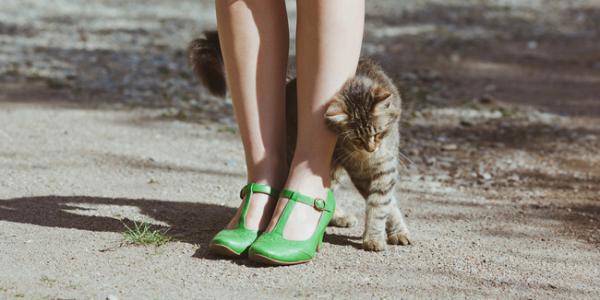Why does not my cat purr?

One of the most characteristic, adorable and defining features of the cat is its ability to purr. This exclusive sound is usually associated with a feeling of welfare. It comforts us, makes us think that our cat is happy and he shows us his affection.
Therefore, when we live with a cat that does not purr, doubts assail us: is our cat happy? Or, on the contrary, do you suffer from any disease? What are we doing wrong so that you do not devote your purring? Definitely, Why does not my cat purr? In this article we explain it to you. Keep reading!
How is the purring of the cat produced?
The purring sound of our cats is very special, however, do you know how it is produced? There are many theories in this regard that try to give an accurate answer. Some follow that it originates in the thorax, when the blood is compressed when passing through the diaphragmatic hiatus and that the air-filled bronchi amplify the vibration. However, a study in the Journal of Zoology [1] suggests that purring is a laryngeal modulation driven by the respiratory flow.
When do the kittens begin to purr?
The purr begins at two days of life of the kitten as another form of communication with her mother, while breastfeeding takes place. The little ones suck while purr and “knead” with its front legs, which stimulates the flow of milk and serves the mother to know that everyone is feeding correctly. This is why many adult cats knead, drool or suck our clothes while they purr. Petting our cat usually activates this sound, although this is not always the case.
What does the roneoneo of the cat mean?
Why do cats purr? In addition to indicating wellness and relaxation, so much that they are even able to purr when they sleep, the cat can use the purr when it is in a situation of stress or illness, for example, when he is admitted to a veterinary clinic. In this case, the purr could be used to comfort yourself.
During purring, cats can display different modalities: higher or lower intensity, more or less air, different speeds or different meanings, since they can also use it as a request. Within cats, not only cats purr, but also wild cats (Felis silvestris). But then, Why does not your cat purr?

When the cat does not purr
As we have seen, purring is an important part of our cat’s communication, which is why a cat that does not emit this characteristic sound becomes an unknown and a concern for its human, who usually thinks that his cat is not happy or have some disease But is that true?
We answer the question of why a cat does not purr or relax or sleep while we pet it. We can divide these cats into three groups:
- Cats that purr, but almost inaudibly. They are cats that purr so softly that the only way to hear them is by sticking their ear to their body or putting their hand on their neck to feel the vibration produced.
- Cats that, indeed, do not purr, even inaudibly. It is about cats that do not emit this sound simply because this is their character, without presenting any pathology and, of course, being happy and loving their humans. Cats have different ways of communicating and each cat chooses what he wants or needs. Just like us humans, each one has his personality and, thus, there will be more or less expressive, affectionate, independent, sociable, etc., without this implying any problem.
- Cats that stop purring. The behavior of a cat is modified with age, experiences and circumstances, and this is why a purring cat can stop doing it, but also on the contrary, that is, cats that did not purr can begin to do so. Of course, if our cat stops purring after some change, such as a move, or has some clinical symptom, we should go to the vet without delay.
We will see below other forms of cat communication that in some cats can replace the purr:
The cat that does not purr and meows
El meow It is another form of communication typical of cats. They use it in multiple situations and with very different meanings. Thus, the cat that does not purr can be made to understand perfectly through meows. Among its most relevant meanings are the following:
- Meow to claim attention: the one reserved to make us understand that he needs something, such as caresses or, more material, food. In the latter case it will be a compelling meow and will not cease until it is obtained.
- Meow of cat in heat: the characteristic of the cats not sterilized during their periods of heat, which can last almost all the year. It is a meow with a very high tone, like a scream.
- Meow to enter or exit: if our cat has access to the outside, this will be its meow in front of the door or the window through which it is accustomed to leave or enter.
- Plaintive meow: unmistakable and a sign that something bad is happening to you, usually it will be a disease. We must consult with our veterinarian.
- Meow greeting: some cats are very “talkative” and they usually meow in a characteristic way every time we enter the house, they enter them or even every time they come across us.

The cat that does not purr and bite
Sometimes we wonder why our cat does not purr and we do not realize that he is communicating with us in his own way. In addition to the meows, some cats tell us a lot by bites. The basic meanings will be the following:
- Playful bite: it is normal for kittens to relate to each other with bites, as a game. Cats are predatory carnivores and biting is one of the activities they must develop to live in an innate way, since, currently, in a flat, they do not need to hunt to eat. The bites between them help them regulate the strength of their jaws and, with age, is a habit that they are abandoning. It is normal for our kittens to bite us and we must teach them not to do so, diverting their attention to the right toys. In some cats this stage persists in time and, either because of lack of socialization or because they have not taught him / her well, they keep nibbling at us every time we play with them.
- Amorous bite: some cats “bite” us delicately as a sign of affection. When we are caressing them or in moments of affection they “take” with their mouth some part of our body, like the nose, without squeezing, without doing any harm, almost like a kiss.
- Warning bite: it is usually more a mark than a real bite. It is frequent that the cat does it to conclude an activity that is stressing it. For example, if we are caressing it for too long or in delicate areas, such as the belly. It is the limit of your tolerance.
As we see, all these mordicos tell us something, without purring and, although it is biting, have nothing to do with aggressiveness. If our cat attacked us with violent bites we should immediately go to a feline behavior professional, an ethologist.

The cat that does not purr and rub
As we have seen, that our cat does not produce the relaxing sound of purring does not mean that it is not communicating with us, much less implies that it is an unhappy animal. After the meow and the bite, we point out, finally, the “refrote”, a clear sample of well-being and affection that not all cats accompany purring.
Our cat will rub against our body, against the part that has more comfortable access, such as the face or legs. It will even jump and flip to cover a larger contact area. If we look, we will see that he always rubs us with the same parts of his body, especially the face. It is not accidental, rub the parts that they release endorphins and, at the same time, they mark us with their smell.

If you want to read more articles similar to Why does not my cat purr?, we recommend that you enter in our Curiosities section of the animal world.


